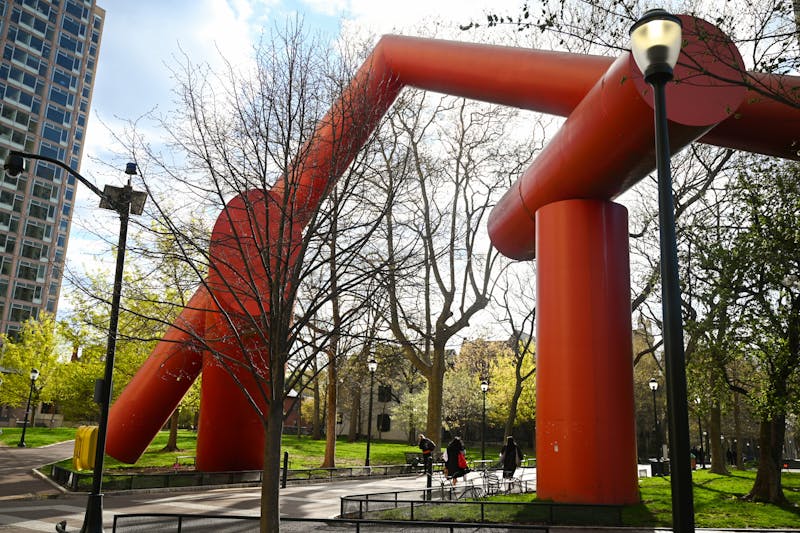_As Penn’s rare books wait for a new home, they are currently inhabiting a different space — cyberspace.
Earlier this year, Penn Libraries created two blogs dedicated to featuring unique books and manuscripts found only at Penn.
The blogs are intended as a way to make the historic materials accessible to the Penn community as Van Pelt Library’s fifth and sixth floors continue to undergo construction. The floors house Penn’s Rare Book and Manuscript Library, and the construction project — which was spurred by a more than $4 million donation — will be completed by the end of the year.
In this feature, The Daily Pennsylvanian takes a look at some of the rare artifacts that will be on display once the library re-opens._
The Calve’s Head
 While this yellowing pamphlet does not stand out at first glance, a careful look at the location and date of its publication tells a different story.
While this yellowing pamphlet does not stand out at first glance, a careful look at the location and date of its publication tells a different story.
This 31-page document, defending a Spanish governor and bishop, represents the earliest known book printed in Jamaica to survive in the Western hemisphere.
Penn’s copy is believed to have been picked up in Jamaica and taken to Pennsylvania as part of the growing trade between the two colonies. It is part of a set of seven pamphlets that once likely belonged to Isaac Norris, a prominent Philadelphia merchant in the 1700s and an early trustee of Penn.
 Roman Prayer Book
Roman Prayer Book
A prayer book belonging to a major force in medieval Christendom resides in Penn’s rare books collection.
This colorful engraving is found in a collection of prayers and devotions presented to a young Maximilian I, Elector of Bavaria, on his 11th birthday.
The prince-electors of the Holy Roman Empire were the members of the electoral college who selected the Holy Roman Emperor. Maximillian I, who married the daughter of the Duke of Lorraine and reorganized the Bavarian administration and the army.
 1545 library list
1545 library list
A historic library list resides in Van Pelt.
A list of books might seem fairly commonplace, but this particular list, written in 1545, has a much more interesting history. The original owner of the manuscript was the Spanish bibliophile and Jesuit priest Juan Páez de Castro. He is most famous for advocating for the establishment of state libraries and lobbying Philip II of Spain to establish a library in Spain.
Since de Castro’s death, the manuscript has passed through the hands of some of the world’s most famous book collectors and dealers before arriving at Penn.
 Records of the Asylum for Orphan Girls
Records of the Asylum for Orphan Girls
Daily chores, meals and misbehavior — these are all catalogued in the records of a prominent London orphanage founded in 1758, called “Asylum or House of Refuge for Orphans and Other Deserted Girls of the Poor.”
The extensive records describe the criteria for the residency, clothing and feeding of the girls, as well as their family backgrounds, ages and circumstances before entering the refuge.
The records also highlight the orphanage’s main purpose in training the girls, which was to create the next generation of domestic workers for its own wealthy patrons.
The Daily Pennsylvanian is an independent, student-run newspaper. Please consider making a donation to support the coverage that shapes the University. Your generosity ensures a future of strong journalism at Penn.
DonatePlease note All comments are eligible for publication in The Daily Pennsylvanian.








